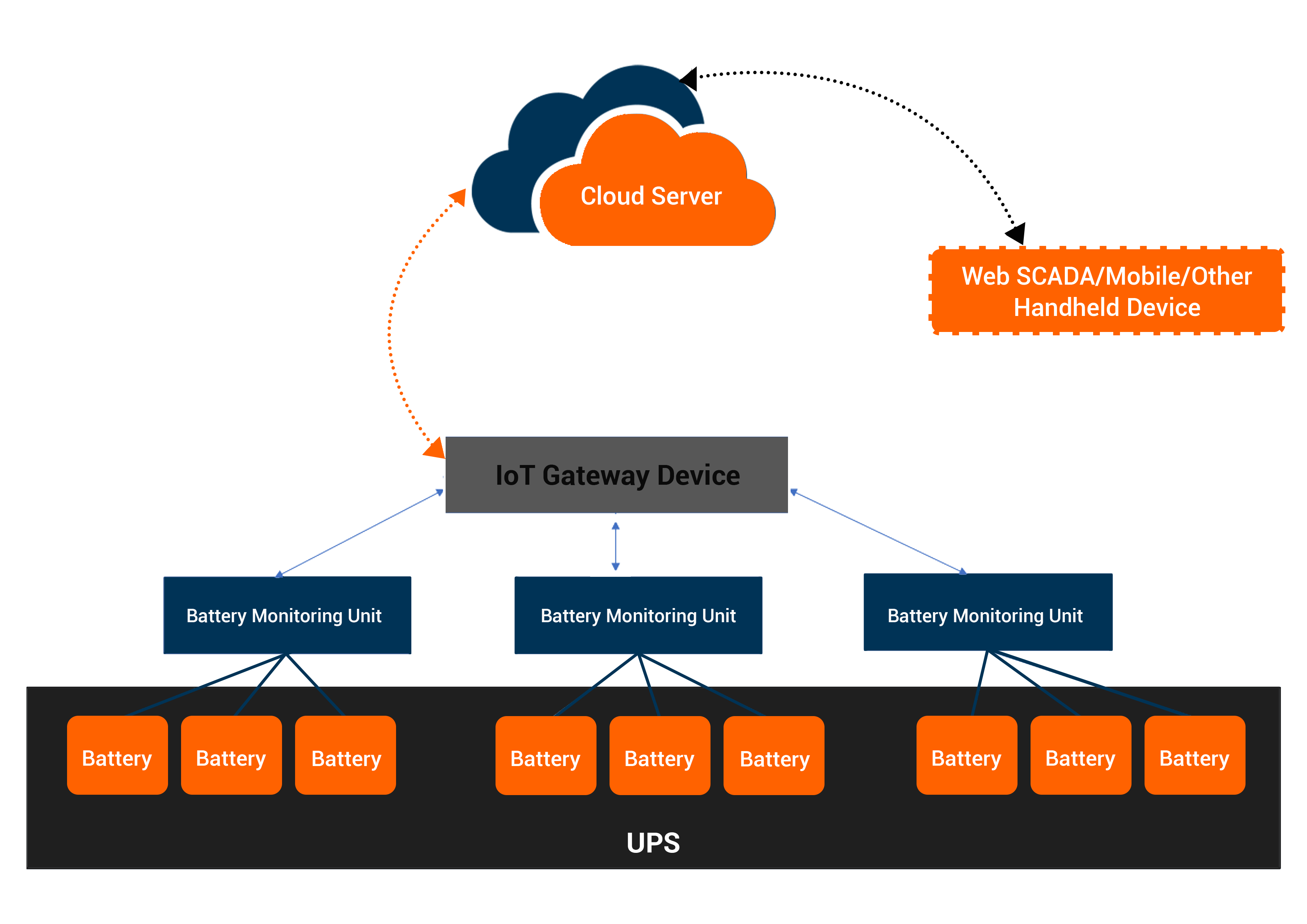About the Customer:
Our customer is an OEM of photovoltaic inverters, variable frequency drivers and advanced automation systems for Industry 4.0. They are a trusted brand with focus on delivering innovative solutions for industrial automation systems.
Business Challenge:
- The customer had deployed a network of industrial UPS solutions for several of their enterprise customers. Their battery management solution has been designed to monitor and report anomalies associated with battery discharge.
- In the absence of any automation solution, field technicians were required to have expertise in examining the system, isolating the defective battery and identifying the defect in the battery.
- The customer desired to implement an intelligent battery monitoring system that would ease the manual monitoring process and deliver benefits of Predictive Maintenance (PdM) or Proactive Maintenance.
Embitel Solution:
We developed the hardware and firmware for an industrial grade network of sensors for battery monitoring and data collection.

- A Battery Monitoring Unit has been designed to collect voltage and temperature data from the installed batteries.
- The data from multiple Battery Monitoring Units is transmitted to an IoT Gateway Device for analysis and decision making. This device constantly monitors the state and health of the batteries and alerts a technician by predicting the occurrence of a fault.
- This solution is able to proactively identify discharged batteries in the network and inform an administrator when there was a need to take action.
- The IoT Gateway Device is connected to two interfaces:
- Field-deployed battery monitoring system.
- On-premise server or cloud server.
The health and state of the batteries can be monitored through a mobile interface or web application that connects to the server and receives data from the IoT Gateway Device.
Integration of Firmware-Over-The-Air (FOTA) Update Feature:
In the event of a change in requirements (such as an alteration in battery voltage, an updated calibration algorithm, etc.) there would be a need to update the firmware in the IoT Gateway Device and the Battery Monitoring Units.
Since the setup was connected to a live high-power circuit, the activity of the entire plant will have to be ceased for manually updating the firmware.
Hence, the Battery Monitoring Unit and IoT Gateway Devices were developed to be reprogrammable over the air (FOTA).
How it Works:
- When required, FOTA Update Image is pushed to the cloud server by the admin users.
- The cloud server then transmits FOTA Image to the IoT Gateway Device which, in turn, sends this information to the Battery Monitoring Units.
- The Bootloader software ported in the Battery Monitoring Units initiates the re-boot of the system, downloads and integrates the updated firmware with the system.
- Once the updates have been deployed, the status is sent back to the IoT Gateway Device that transmits it to the cloud.
Features:
- The hardware of the IoT Gateway Device and Battery Monitoring Units were configured such that it accounts for the additional memory required for storing FOTA images.
- The bootloader software for each of these devices was specifically designed based on memory requirements for storing and updating the software.
- If there is any disruption in the communication between the IoT Gateway Device and Battery Monitoring Units, the gateway device reinitiates the communication through multiple retrials.
- The IoT Gateway Device and Battery Monitoring Units are equipped with the information to check the sanity of the images. This is a crucial step to ensure that the images are being received from authentic sources.
- The system also performs CRC check to determine whether the received packet is complete. This helps in avoiding a partial firmware update.
- The system has been incorporated with a rollback mechanism that is triggered in the event of failures. For instance, if there was a disruption in the WiFi network at the time of an update, the system rolls back to the default image and relinquishes the new update.
Embitel Impact:
- The network of Battery Monitoring Units and IoT Gateway Device mitigates the complexities involved in the examination and assessment of the battery monitoring system for faults and failures. Hence, our solution reduces the operational cost by a significant amount.
- Our solution enables the administrator to analyse whether the target voltage and current are maintained in the circuit. This overall view was not available in the original setup.
- The network notifies the administrator of faults before the entire system shuts down due to failure. This is, hence, a Predictive Maintenance (PdM) solution for the battery monitoring unit.
- In case there is a change in the measurement algorithm, there will be updates to the Battery Monitoring Units and IoT Gateway Device through FOTA.
Tools and Technologies:
- Texas Instrument (TI) Industrial Microcontroller was used in the gateway device and battery monitoring units.
- Texas Instruments (TI) FreeRTOS was used for embedded software development.
- OrCAD design tools were used for schematic development. HyperLynx was used for Signal Integrity analysis, Power Integrity check, and Thermal Analysis.
- Texas Instruments Code Composer Studio was utilised for the development of the gateway device and battery monitoring units.
- QT framework was used for HMI design of the PC-Application and ATS.
- TCP/IP server was used for remote PC configuration.
- ModBus slave stack was utilised for creating an interface with the Building Management Software.


